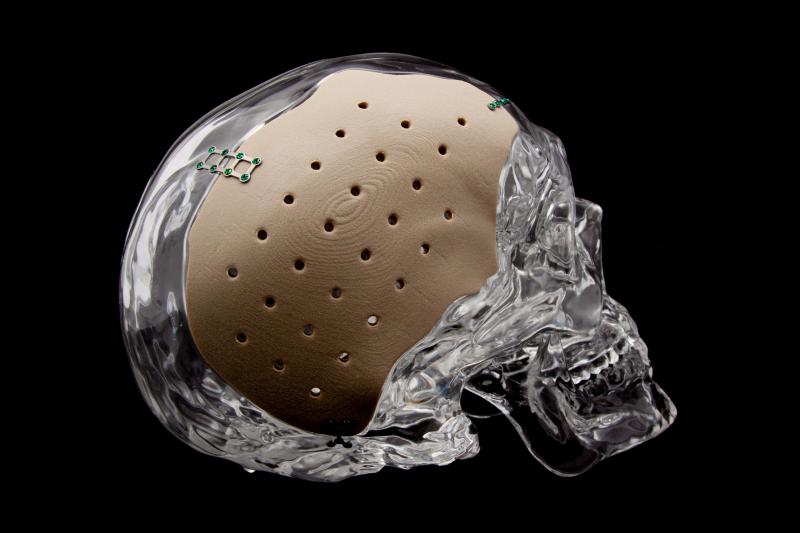Manufacturers get into the medical device business in a myriad of ways. OPM Biomedical entered the field by purchasing their first printer, according to Severine Zygmont, the company’s president.
OPM Biomedical is not the only medical device manufacturer making a major investment in 3D-printing as a means of delivering their product. But they are taking a more robust and thorough approach to employing the technology.
“What’s unique about us is the way we use our printer,” explains Zygmont. “We actually use it to produce implants using a biocompatible polymer. There’s a significant difference between using 3D-printing as part of a manufacturing process to produce an implant, such as creating models or guides, and using it as the actual process to manufacture the implant.”
The end result of OPM Biomedical’s approach is a patient-specific implant. Their version of additive manufacturing goes beyond a novel way to create an implant that’s still meant to be universal and interchangeable. From the company’s earliest endeavors, every implant was unique.
“The first application for our OsteoFab process was cranial implants,” Zygmont says. “We start with a CT scan on the patient, design an implant that is shaped to perfectly fit the missing part of the bone, and then it gets manufactured at our main facility in Connecticut. From there, it’s shipped directly to the hospital.”

The OsteoFab Patient Specific Cranial Device (OPSCD) is intended for the replacement of bony voids in the cranial skeleton. (Image credit: OPM Biomedical)
Surgeons who opt for custom implants need to follow a strict and specific scanning protocol to make sure OPM Biomedical has the high quality data required for their process. The scan is transformed into imaging that can be fed into the 3D printer. The development of the necessary imaging can take anywhere from a few hours to several days, depending on the complexity.
The collaboration with the surgeon doesn’t stop there. The manufacturer actively takes advantage of the accumulated expertise of the physicians who will put the implants in place.
“We work with the surgeons on how they want the implant to be designed,” Zygmont says. “Because at this time we’ve got practically all the flexibility in the world to design something that will match the anatomical defect perfectly, but the surgeon may want it adjusted for some reason. They may want to remove some soft tissue, may want to remove some of the native bone.”
Once the implant is printed, it is packaged and shipped straight to the hospital. The implants are shipped non-sterile and can be autoclaved once on premises at the healthcare facility.
Approximately 1,300 of OPM Biomedical’s patient-specific cranial implants have been used worldwide. And, like proverbial snowflakes, no two are alike.
Thus far, all those specialized implants have proved to be a positive upgrade on the alternative, for both surgeons and patients.
“Being customized, it’s designed to fit,” notes Zygmont. “The surgeon doesn’t have to spend additional time contouring, figuring out if it’s going to fit. So usually we save a lot of time for the surgeon and the patient in the operating room vs. other technologies”
Shorter surgeries usually mean improved recovery, but Zygmont maintains there’s something potentially even more beneficial at play.
“The tissue response is very different than what you would see in other implants,” she says. “So far what we’ve seen is the response of the native cells has been a lot more positive than you’ve seen in other polymeric implants.”
Research hasn’t been able to definitively pinpoint a specific reason for the improved biological compatibility, but it possibly relates to the unique makeup of the polymer. Though generally inert, at a molecular level, it is dissimilar to other plastics.
Currently concentrated on repairing cranial defects, Zygmont says that the company is now moving into facial implants and spinal implants. Theoretically, the versatility inherent in the design process means OPM Biomedical will be able to pursue just about any medical specialty that involves implants.
There’s another motivation to expanding the manufacturing possibilities. Proud as everyone at OPM Biomedical is of their process and the resulting implants, the ultimate focus is on where those creations end up.
“Something that’s been really key to us is to think about the ultimate customer — that’s the patient,” Zygmont says.
More implants for more uses means helping more patients. And it all started with a single printer.




